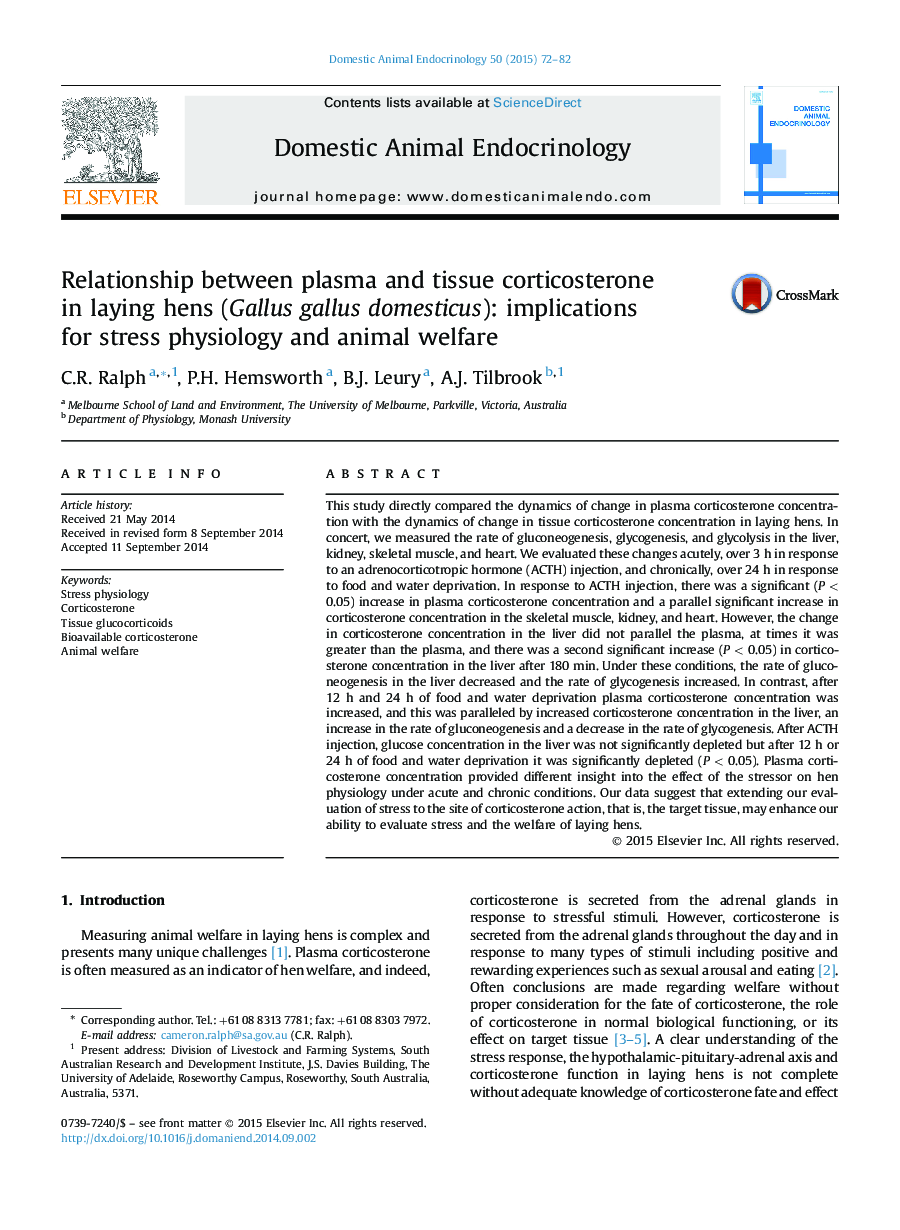| کد مقاله | کد نشریه | سال انتشار | مقاله انگلیسی | نسخه تمام متن |
|---|---|---|---|---|
| 2393480 | 1551509 | 2015 | 11 صفحه PDF | دانلود رایگان |

This study directly compared the dynamics of change in plasma corticosterone concentration with the dynamics of change in tissue corticosterone concentration in laying hens. In concert, we measured the rate of gluconeogenesis, glycogenesis, and glycolysis in the liver, kidney, skeletal muscle, and heart. We evaluated these changes acutely, over 3 h in response to an adrenocorticotropic hormone (ACTH) injection, and chronically, over 24 h in response to food and water deprivation. In response to ACTH injection, there was a significant (P < 0.05) increase in plasma corticosterone concentration and a parallel significant increase in corticosterone concentration in the skeletal muscle, kidney, and heart. However, the change in corticosterone concentration in the liver did not parallel the plasma, at times it was greater than the plasma, and there was a second significant increase (P < 0.05) in corticosterone concentration in the liver after 180 min. Under these conditions, the rate of gluconeogenesis in the liver decreased and the rate of glycogenesis increased. In contrast, after 12 h and 24 h of food and water deprivation plasma corticosterone concentration was increased, and this was paralleled by increased corticosterone concentration in the liver, an increase in the rate of gluconeogenesis and a decrease in the rate of glycogenesis. After ACTH injection, glucose concentration in the liver was not significantly depleted but after 12 h or 24 h of food and water deprivation it was significantly depleted (P < 0.05). Plasma corticosterone concentration provided different insight into the effect of the stressor on hen physiology under acute and chronic conditions. Our data suggest that extending our evaluation of stress to the site of corticosterone action, that is, the target tissue, may enhance our ability to evaluate stress and the welfare of laying hens.
Journal: Domestic Animal Endocrinology - Volume 50, January 2015, Pages 72–82